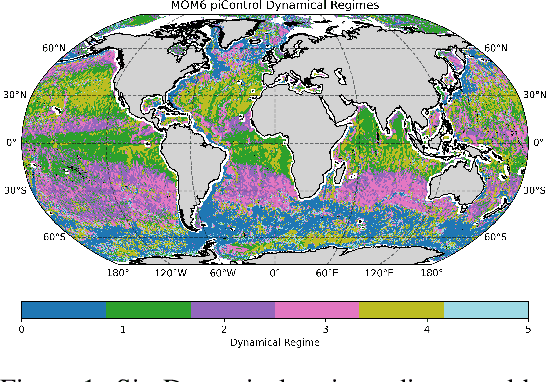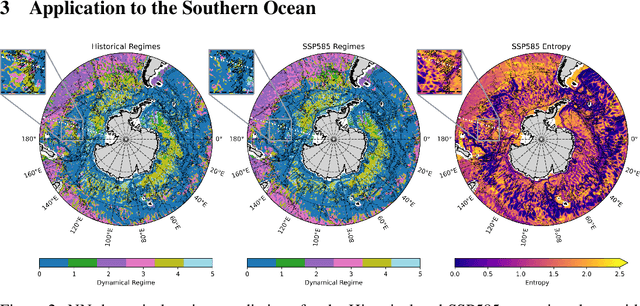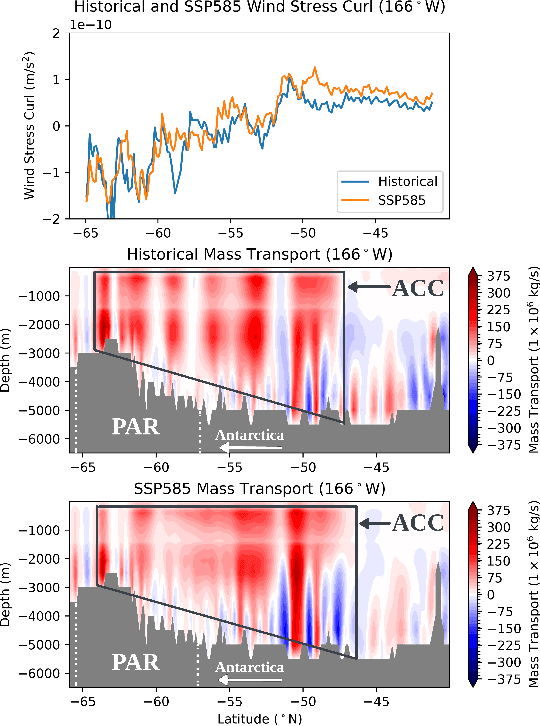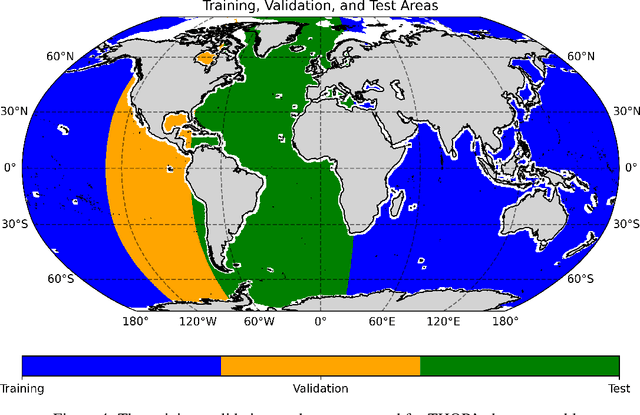Southern Ocean Dynamics Under Climate Change: New Knowledge Through Physics-Guided Machine Learning
Paper and Code
Oct 21, 2023



Complex ocean systems such as the Antarctic Circumpolar Current play key roles in the climate, and current models predict shifts in their strength and area under climate change. However, the physical processes underlying these changes are not well understood, in part due to the difficulty of characterizing and tracking changes in ocean physics in complex models. To understand changes in the Antarctic Circumpolar Current, we extend the method Tracking global Heating with Ocean Regimes (THOR) to a mesoscale eddy permitting climate model and identify regions of the ocean characterized by similar physics, called dynamical regimes, using readily accessible fields from climate models. To this end, we cluster grid cells into dynamical regimes and train an ensemble of neural networks to predict these regimes and track them under climate change. Finally, we leverage this new knowledge to elucidate the dynamics of regime shifts. Here we illustrate the value of this high-resolution version of THOR, which allows for mesoscale turbulence, with a case study of the Antarctic Circumpolar Current and its interactions with the Pacific-Antarctic Ridge. In this region, THOR specifically reveals a shift in dynamical regime under climate change driven by changes in wind stress and interactions with bathymetry. Using this knowledge to guide further exploration, we find that as the Antarctic Circumpolar Current shifts north under intensifying wind stress, the dominant dynamical role of bathymetry weakens and the flow strengthens.
 Add to Chrome
Add to Chrome Add to Firefox
Add to Firefox Add to Edge
Add to Edge